Landscaping mistakes – 8 common errors and how to avoid them
These landscaping mistakes can lead to disaster rather than delight, but our expert tips will help you avoid common pitfalls when planning your plot
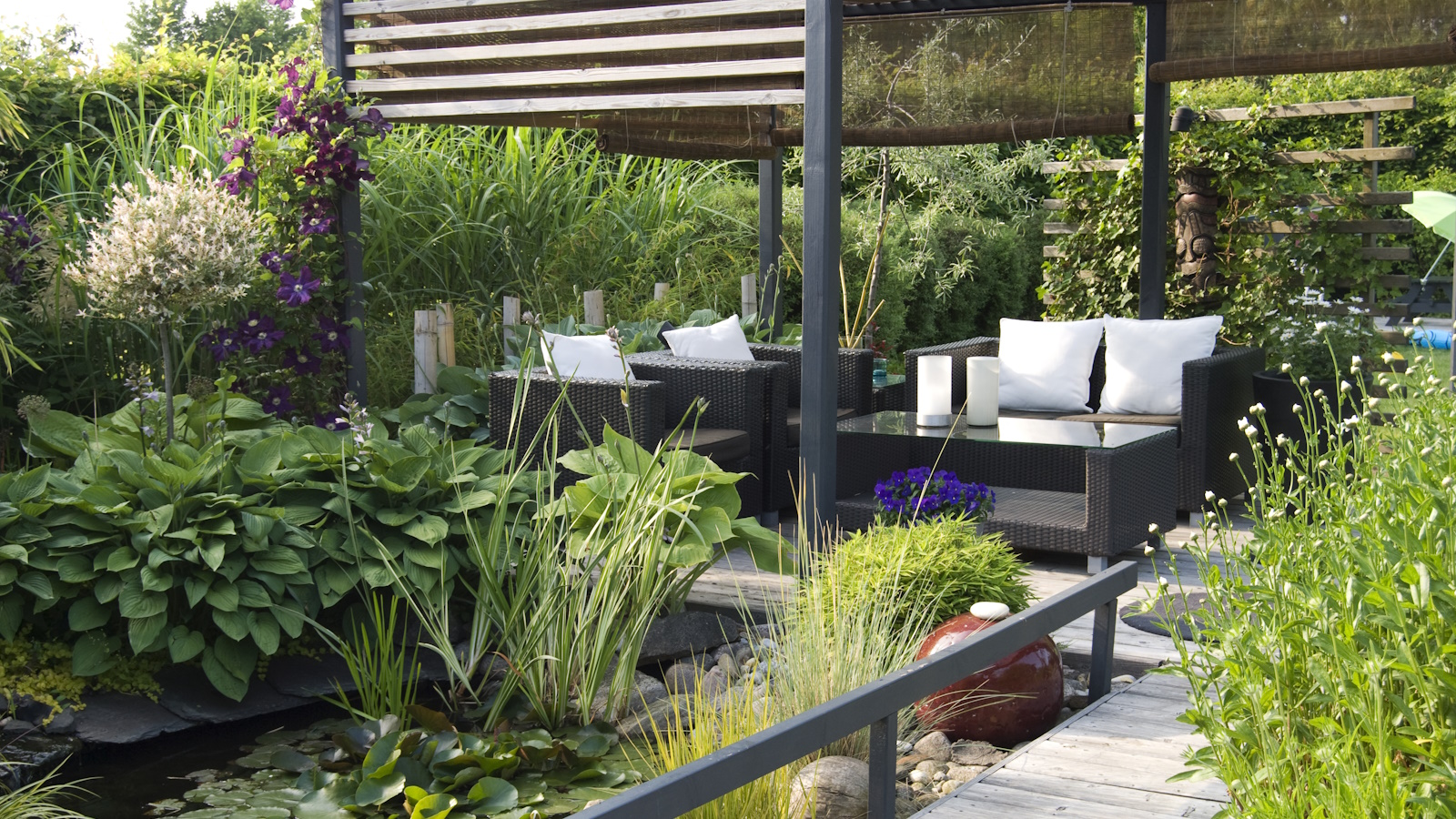

Landscaping mistakes can be surprisingly easy to make and could result in a yard that's uninviting, impractical, or eye-wateringly expensive. So, if you're about to plan a garden makeover, it's worth being aware of the potential pitfalls.
All your garden landscaping ideas should be weighed up with a good deal of consideration and planning before being put into place. For instance, a paved area might seem like an obvious choice. But, if it's too small, poorly positioned or hard to keep clean, then you may want to reconsider your options. Mistakes don't just revolve around hardscaping, either. Choosing the wrong plants can lead to an ongoing struggle to keep them alive. At the more extreme end, it can lead to structural damage or invasive plants that are hard to control.
But, if you know which landscaping mistakes to watch out for, you can easily avoid any unwelcome surprises or moments of hindsight down the line. We have gathering expert insight and advice from landscape gardeners to help you along the way.
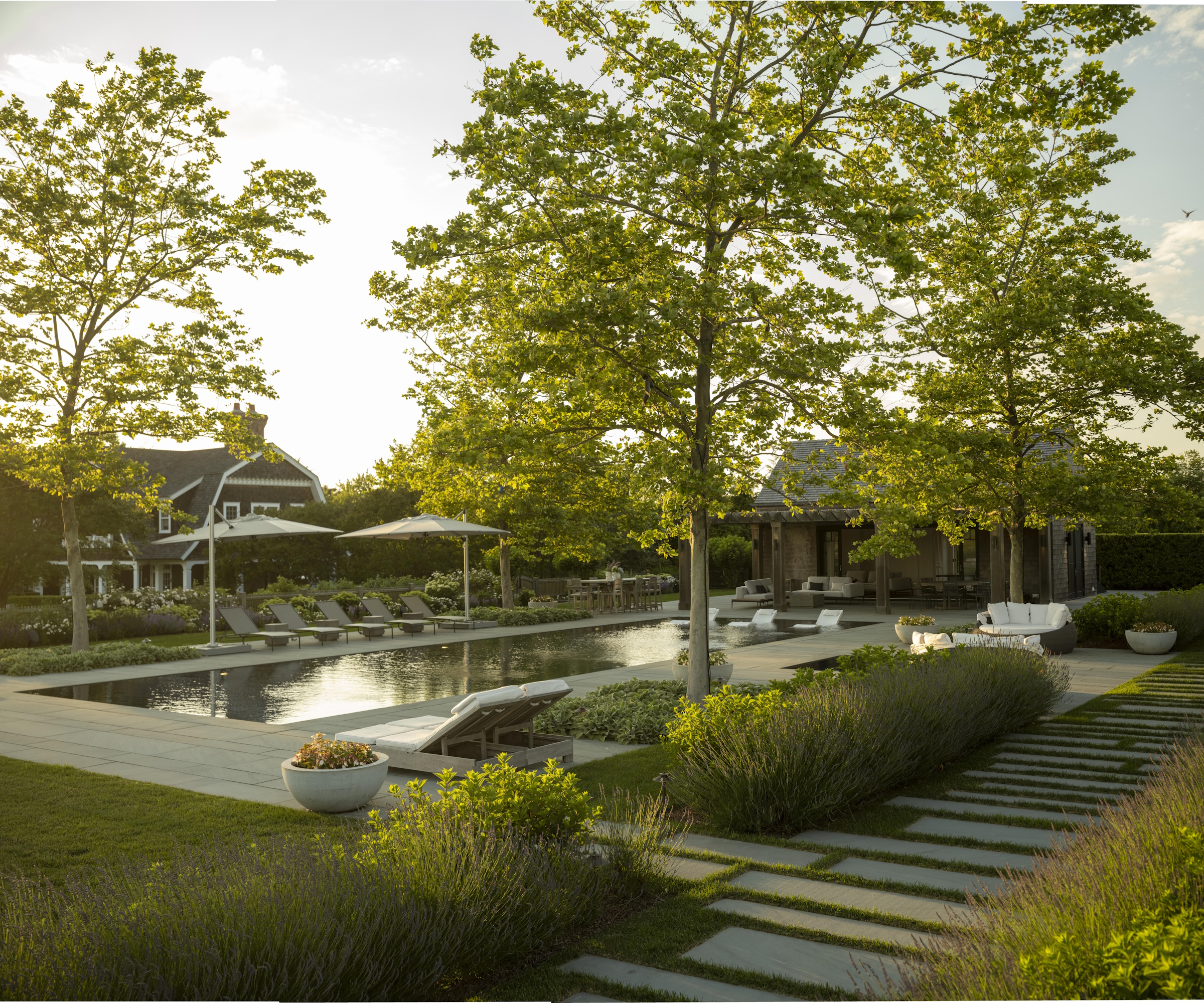
Landscaping mistakes: 8 things to look out for
Landscaping is an effective way to make your current garden space more attractive and appealing in its design, but there are a few common mistakes that you'll want to avoid. We've rounded up the key points to remember below to ensure your garden makeover is a success rather than a shambles.
1. Proceeding without a plan
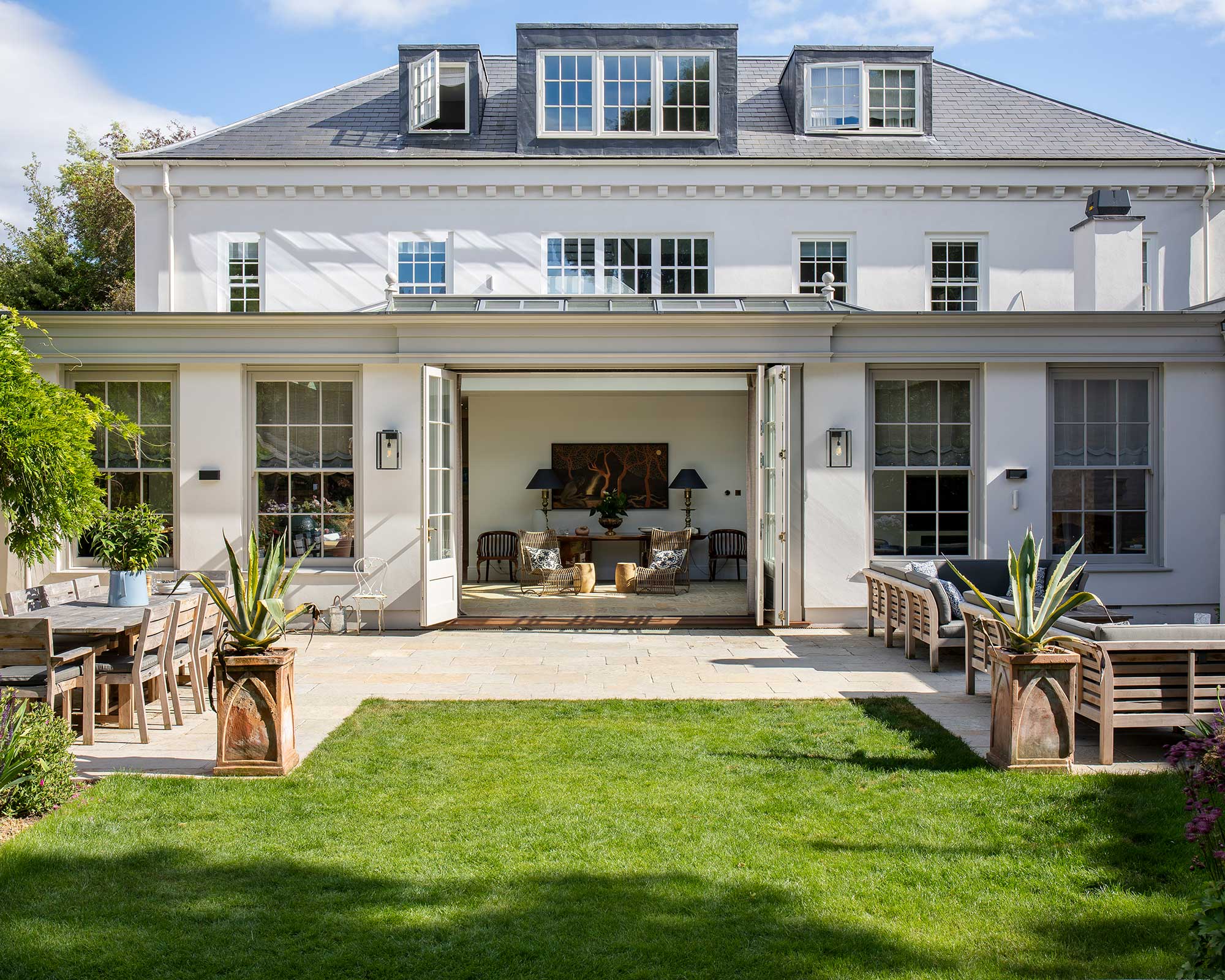
This stunning garden has been designed to have different zones – featuring Trusloe Limestone in a Seasoned Finish paving by Artisans of Devizes
The number one top tip for any sort of design – interior or exterior – is to plan. In fact, when it comes to landscaping, the biggest mistake that people make is not planning.
Prioritize features that will enable you to carry out activities in your space to ensure it functions for you and your needs. If you wish to create separate 'zones' for activities, then think about how you can divide one space from the next.
Consider what your color palette is going to be, too. The more you plan, the easier it will be to bring your vision to life. Think about potential themes and get creative with mood boards until you have a clear idea in your mind (and on paper) of what you are trying to achieve. Then, whether you are hiring a pro to come in and take care of the actual build, or are doing it yourself, there will be a good solid plan to work from.
And speaking of hiring a pro, don't forget to consider any additional costs – planning your budget is always important. You can find more info on how much does landscaping cost in our dedicated guide.
2. Creating a patio area that is too small
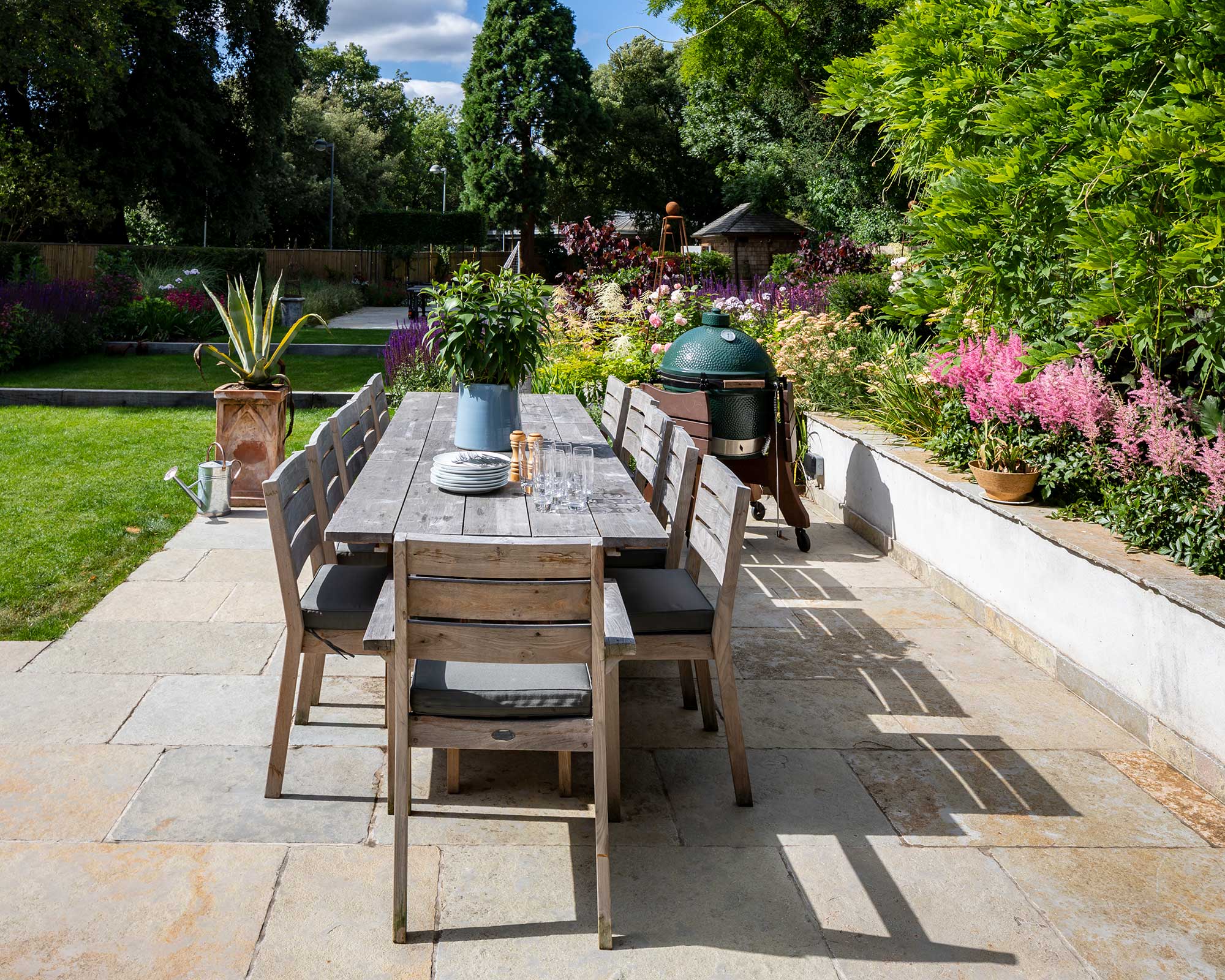
This dining scene is spacious and inviting – with Trusloe Limestone in a Seasoned Finish paving by Artisans of Devizes
If you've got your eye on some of the best outdoor furniture and you need a stable patio or deck to place it on. But creating one that is insufficient in size can be a common mistake.
'You'll need it to be large enough for your dining table and chairs of choice, so take measurements into account,' says Rachel Bull, H&G's Head of Gardens. 'You'll also need to add plenty of room around the edges, so people can move freely around the space without feeling cramped.'
Rachel also suggests factoring in the potential for guests needing extra chairs at times. 'You may start to realize that in most cases, the more patio space, the better,' she says. 'After all, the patio is likely to be the social hub of your yard, so it may be worth sacrificing a few more inches of lawn or border for a comfortable and functional result.'

Rachel is a gardening editor, flower grower and floral designer. Her journalism career began on Country Living magazine, sparking a love of container gardening and wild planting. After more than a decade writing for and editing a range of consumer, business and special interest titles, Rachel became editor of floral art magazine The Flower Arranger. She then trained and worked as a floral designer and stylist in London for six years, before joining the Homes & Gardens team.
3. Making a path a focal point down the center of a yard
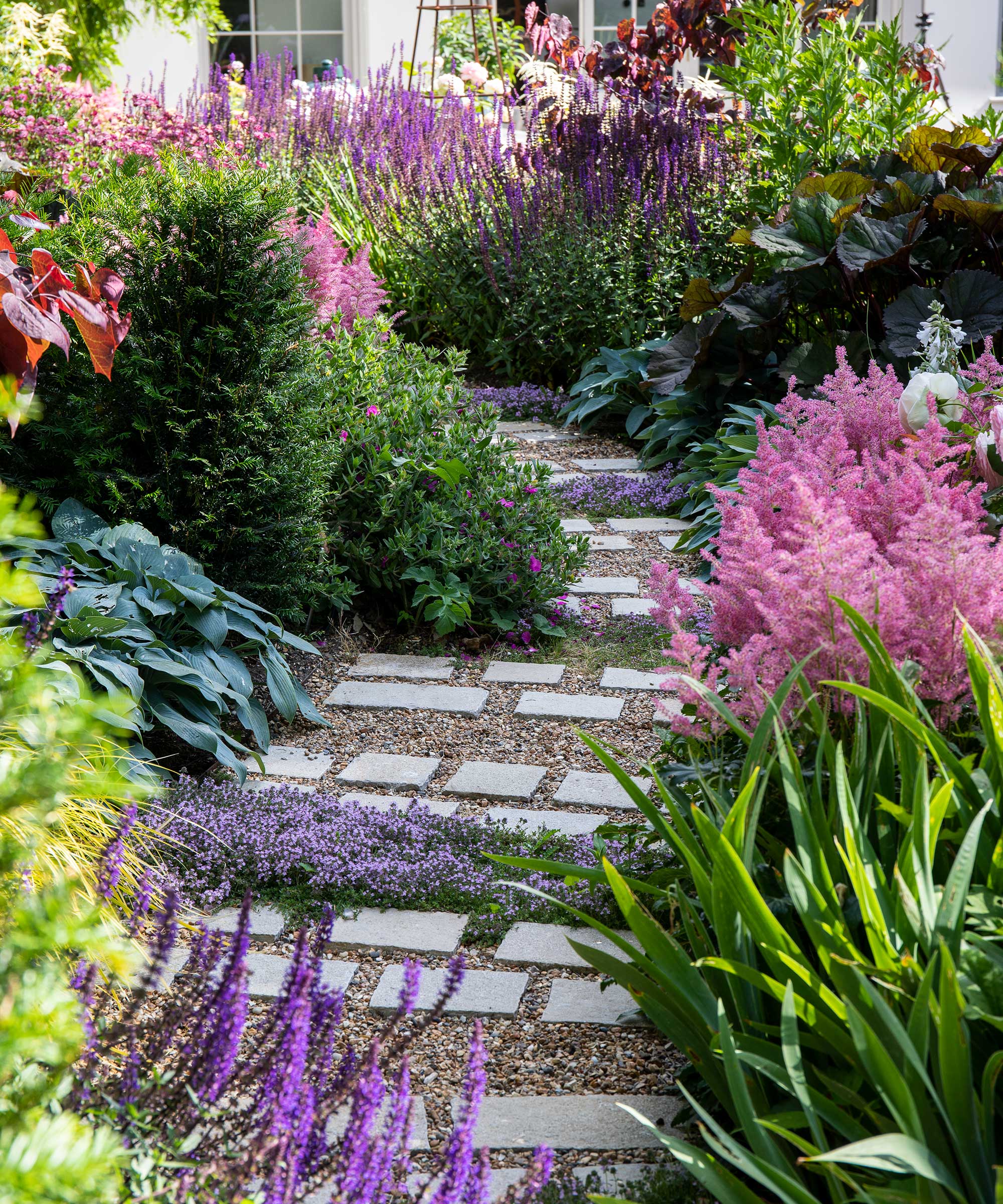
We love this meandering pathway which uses Trusloe Limestone Cobble in a Seasoned Finish paving from Artisans of Devizes
There are so many gorgeous garden path ideas, so why stick to a boring straight one that splits your yard right down the middle? This will draw the eye (and not in a good way), make the whole space feel smaller, and in most cases, will reduce your landscaping options for the rest of the plot drastically.
Instead, introduce a gentle curve, try some stepping stones, think about integrating steps, or open up a lawn whilst making maintenance easier by positioning a walkway to line a border.
4. Forgetting about drainage

'The Rain Chain' by Wendy Allen at RHS Hampton Court Palace Flower Show 2009 has lots of clever drainage features
If you live in a region where it tends to rain a lot, forgetting about drainage ideas is one of those landscaping mistakes that is crucial to avoid. Not taking drainage requirements into account can cause raised beds and planters to become waterlogged, which makes it tricky for plants to survive.
What's more, if your paving is installed with incorrect falls (which refers to the gradient), puddles of water are created. Not only is this a slip hazard, but it can result in flooding and additional damage to your home and garden structures.
Luckily, there are plenty of savvy ways to incorporate drainage into a plot, whether it's with pretty rain garden features, a French drain, installing a water butt to collect rainwater run-off from roofs, or by opting for permeable paving or garden gravel ideas.
5. Not improving the soil before planting up borders

Improving the soil will lead to more impressive flowerbeds
If you're planning stylish flower bed ideas and you're ready to add a gorgeous new border to your plot, don't be tempted to skip the first important step – preparing the soil.
'You will need to turn the soil using a garden fork, such as this recommended model from Amazon, removing any weeds and large stones, and then dig in plenty of compost and some organic fertilizer,' says Rachel Bull.
Clay soils can be especially problematic as they are prone to waterlogging, are very difficult to dig, and easily become compacted. Although some plants can grow happily in these conditions (fruit trees and roses, for instance), in most cases you'll want to improve the structure of the soil before creating a flowerbed.
Installing raised beds or digging in plenty of organic matter, such as manure or this R&M Organics compost from Amazon, will help, or for smaller areas you can try adding in large volumes of grit.
6. Picking the wrong plants for your plot
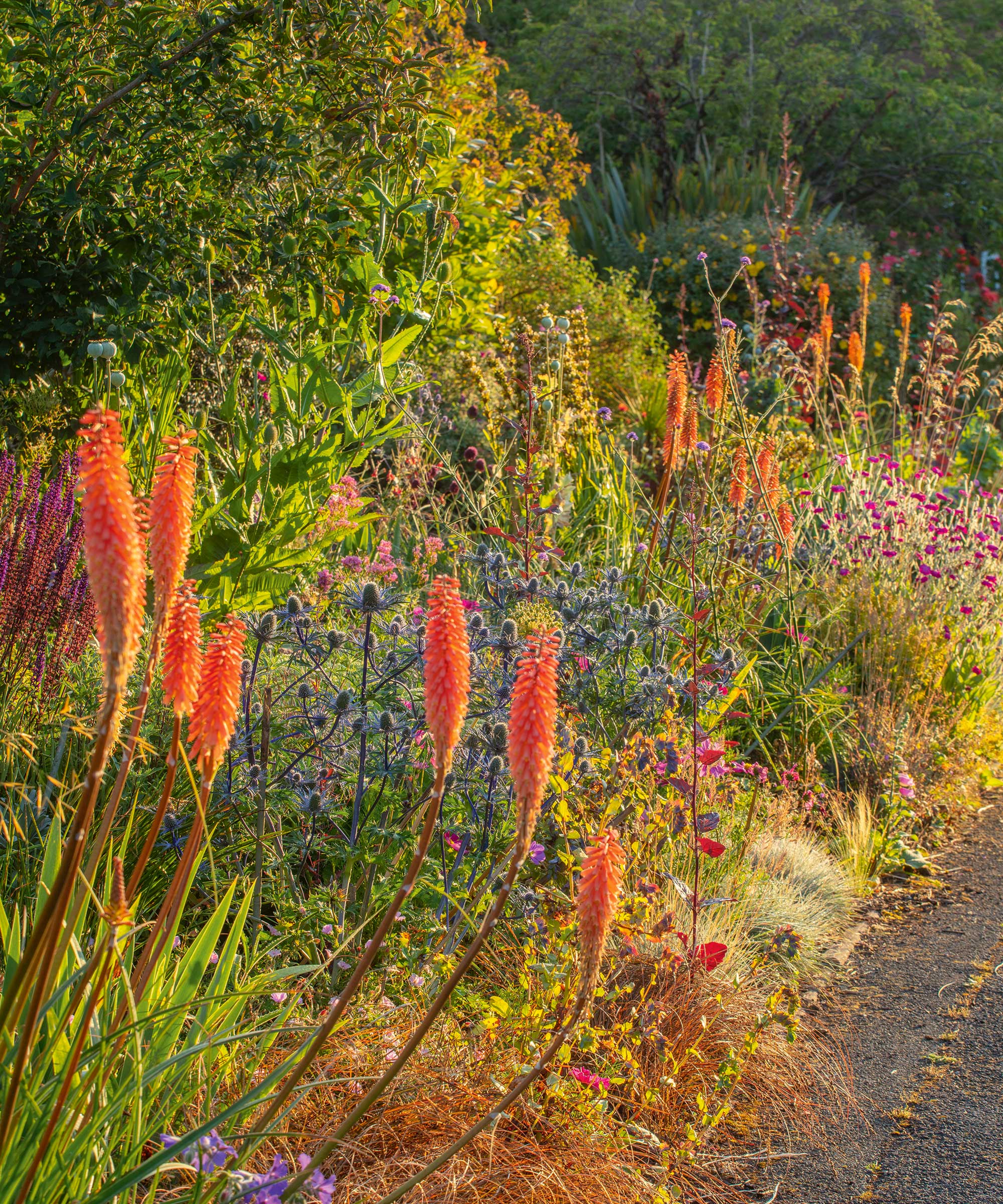
This hot-hued border makes a striking impact
A common mistake is putting plants in the wrong spot. Try not to just put a plant somewhere because it looks good. Think about other elements, like will it receive the required amount of sunlight there? Or, perhaps the plant needs more shade, so it needs to be in a more secluded area.
Research the plants that you want and think about the practicality and location of your garden based on your US hardiness zone, so you can ensure you provide the plant with the right climate. That way, your garden is more likely to thrive.
Gerard Splendore, a broker at Coldwell Banker Warburg in NYC, says: 'Buying plants simply because they are on sale is not the best reason to invest in landscaping, and inappropriate plantings or too many of the same type will also backfire as a strategy.'
He adds that 'beginning landscaping without a color scheme is a mistake'. It's much better (and easier) to pick a palette for your plants and stick to it for harmonious results. Our guide to garden color schemes has lots of tips to get you started.

Gerard Splendore is a real estate broker at Coldwell Banker Warburg in New York City. Previously he had a long career as a residential interior designer, and incorporates his eye for design throughout each marketing process.
7. Choosing invasive plants or destructive trees

Keep larger trees away from the house like in this garden, featuring Grafton Limestone paving in a Seasoned Finish from Artisans of Devizes
Jean Rosalia, a realtor at Coastal Towne Realty in Virginia Beach, VA, says one of the biggest landscaping mistakes that can turn buyers away is planting invasive or destructive trees, vines and privacy plants. 'When thinking of invasive plants, the first thing that comes to mind is bamboo because it's very hard to contain, spreads rapidly, and is even harder to get rid of.'
Jean also warns against ivy. 'While it looks beautiful on historic brick homes, it actually erodes the mortar joints between the bricks, and can cause structural issues if let to go too long.'
And while those mulberry trees are beautiful, when they bloom, she says they're really messy. 'Not only do the berries drop everywhere and stain whatever they land on, but the birds also eat the berries and the incredibly acidic droppings will actually damage the paint on your vehicle.'
Planting trees too close to the house is another common error, and Jean lists mulberry and weeping willow trees as being particularly invasive. 'Their roots grow under slabs and foundations or into water or sewage pipes, causing thousands of dollars in damage,' she warns. 'Trees planted too close to homes with overhanging limbs that grow over roofs also do damage by leaving sap and lifting roofing shingles.'
Got a small backyard and don't want your trees to take over the space? Our best trees for small gardens feature is a good place to start your search. We also have lots more tips for landscaping around trees in our guide.
8. Overlooking maintenance

A lawn requires regular upkeep
When planning your new garden, it's easy to overlook how easy – or tricky – it will be to maintain. But, if you want to actually spend time relaxing in your yard rather than constantly doing chores, it's worth thinking about.
You'll need to ensure you can mow the lawn regularly, trim hedges and bushes, keep on top of pruning, as well as making sure any debris or clutter is removed from the yard.
Of course, there are many ways you can make a yard more low maintenance. If you replace a lawn with decking, or avoid using fast-growing shrubs, then you'll instantly reduce the amount of work you'll need to do. Composite decking requires even less upkeep. You might want to add garden edging to your borders too – it's an easy way to keep everything in its place.
FAQs
What are some of the best shrubs for landscaping with?
In order to avoid choosing the wrong shrubs for your backyard landscaping, it is very useful to check your US hardiness zone and find out your soil type before you begin. That way you'll be sure to select plants that will naturally thrive in your area.
Hydrangeas are typically wonderful shrubs to landscape with, as they provide huge amounts of cover and are hugely versatile. Lavender, photinia and Japanese quince also work well as woody landscaping shrubs for any sized plot.
Depending on your style of backyard, there are so many different materials and plants you can utilize to bring your landscaping ideas to life. From landscaping with rocks to landscaping under trees, the possibilities are vast. And by understanding the common pitfalls before you get started, you can enjoy the process, saving precious time and money along the way.
Sign up to the Homes & Gardens newsletter
Design expertise in your inbox – from inspiring decorating ideas and beautiful celebrity homes to practical gardening advice and shopping round-ups.

Holly started writing about gardening five years ago, and she is a regular contributor to Homes & Gardens. She has also written many gardening features for Woman & Home and Real Homes, too. She has previous experience as a professional gardener, where she helped to plant and maintain private gardens. Holly has also looked after allotment plots over the years and loves to grow her own flowers and veggies from seed. In her spare time, she enjoys visiting local gardens, botanical drawing, and tending to her ever-growing collection of houseplants.
-
 This once-dated kitchen is now a timeless space with the coziest details – and its the classic color palette that's made it a chic, welcoming space
This once-dated kitchen is now a timeless space with the coziest details – and its the classic color palette that's made it a chic, welcoming spaceWarming colors and natural materials combine to create this enduringly classic kitchen scheme
By Molly Malsom Published
-
 How to grow crepe myrtle in pots – and transform even the smallest of yards with dazzling flowers this summer
How to grow crepe myrtle in pots – and transform even the smallest of yards with dazzling flowers this summerGrowing crepe myrtles in pots will inject splashes of brilliant color into your outside space
By Thomas Rutter Published